When it comes to indulging in a glass of champagne, two iconic names instantly come to mind – Veuve Clicquot and Moët et Chandon. These renowned champagne houses have been delighting palates around the world for centuries, each with its own distinct history, style, and fan base. While both offer exquisite bubbles that elevate any celebration or special occasion, there are subtle nuances that set them apart.
In this ultimate battle of the bubbly titans, we delve into the realms of Moet vs Veuve to uncover their unique qualities, taste profiles, and the stories behind these legendary champagnes. So grab a flute and join us on this effervescent journey as we compare Veuve Clicquot and Moët Chandon head-to-head in search of the ultimate champagne champion.
History of Veuve Cliquot
Founded in 1772 by Philippe Clicquot, Veuve Clicquot is a renowned champagne house. It is known for its exceptional quality and innovative techniques. However, it wasn’t until after the death of Philippe’s son and the subsequent takeover by his widow, Barbe-Nicole Ponsardin Clicquot, that the brand truly thrived.
Madame Clicquot or Barbe-Nicole defied societal norms of the time when she took over the wine business in 1805. This way becoming one of France’s first female entrepreneurs as the head of Veuve Clicquot.
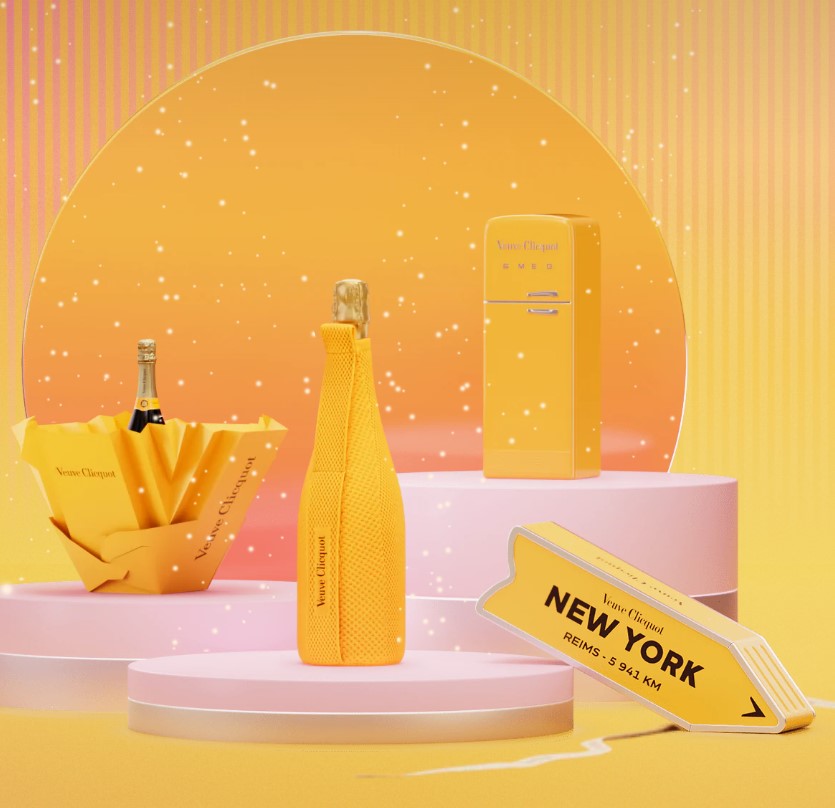
Under Barbe-Nicole’s leadership, Veuve Clicquot revolutionized winemaking practices and became a pioneer in champagne production. Madame Clicquot introduced a novel technique called riddling for the production of sparkling wine. It involved turning each bottle upside down to allow sediment to settle on the cork before removing it. A process that is still used today for sparkling wines and champagne.
This innovation allowed for clearer and more refined champagnes. Not only did Veuve Clicquot excel in production techniques, but they also excelled in marketing their brand across Europe. Veuve Clicquot even reached as far as Russia.

Fast forward to 1986 when LVMH (Moët Hennessy Louis Vuitton), one of the world’s largest luxury goods conglomerates, acquired Veuve Clicquot. The partnership proved fortuitous as the LVMH luxury brand provided global recognition and support while maintaining traditions established by Barbe-Nicole herself.
History of Moet et Chandon
LVMH, the renowned luxury goods conglomerate, has an illustrious history deeply intertwined with Moet et Chandon Champagne. The story of moet chandon really begins in 1743 when Claude Moet established a wine trading business in Epernay, France. However, it was his grandson Jean-Remy Moet who truly revolutionized the brand by establishing its international reputation.
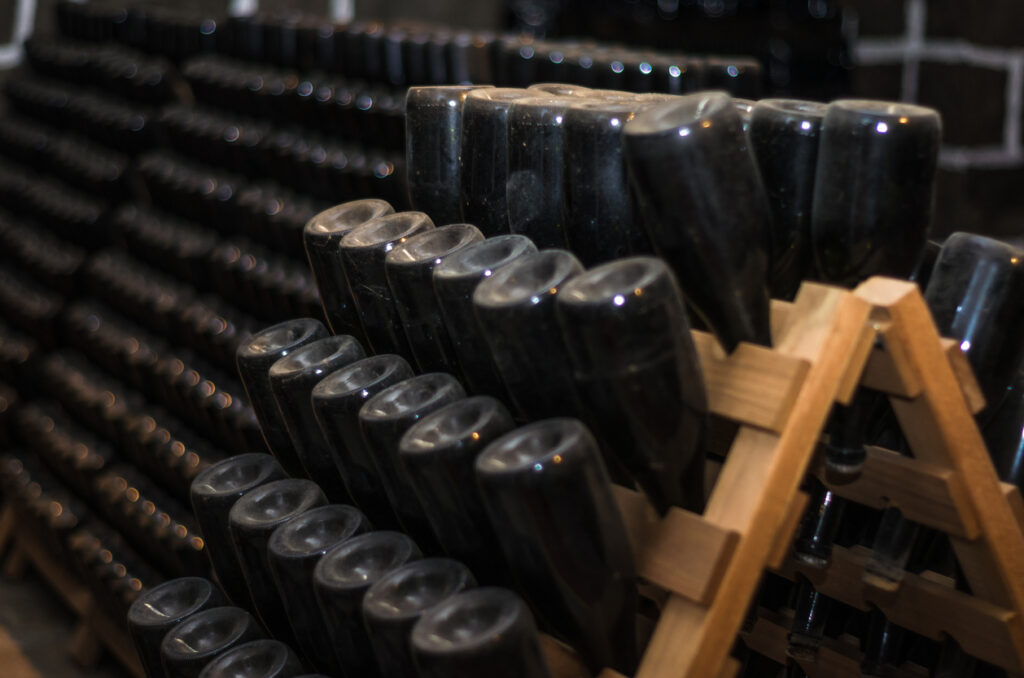
During the late 18th and early 19th centuries, Jean-Remy forged powerful relationships as a wine trader with influential figures around the world. Moet Chandon champagne became synonymous with opulence and celebration of special occasions.
The Marquise de Pompadour loved Moët & Chandon. This led her to declare that champagne was the exclusive elixir capable of enhancing every woman’s beauty
Champagne As A Symbol Of Luxury And Celebration
As a result, it gained favor among royalty and nobility across Europe. By meticulously selecting vineyards and implementing innovative winemaking techniques in the champagne region, Jean-Remy crafted exceptional cuvees. These left a lasting impression on distinguished individuals such as Napoleon Bonaparte.

The affinity for luxury led to numerous mergers and acquisitions in champagne region over the years. Eventually leading to LVMH’s acquisition of Moet et Chandon in 1987.
This union propelled both champagne brands to even greater heights within the global champagne industry. Today, through their shared dedication to excellence and continuous innovation under LVMH’s stewardship, Moet Chandon remains an iconic symbol among champagne houses of timeless elegance enjoyed by discerning champagne connoisseurs worldwide.
Tennis legend Roger Federer recently became the brand ambassador for Moet Chandon adding to the glamour of both brands.
High end Champagnes – Dom Perignon
Dom Perignon, the iconic Champagne house known for its luxurious and prestigious bottles offering one of the best champagnes, has a rich history dating back to the 17th century. Named after the Benedictine monk who contributed significantly to the development of Champagne production techniques.
Dom Perignon represents the epitome of high-quality sparkling wine. Each bottle is meticulously crafted using only the finest grapes from carefully selected vineyards in France’s Champagne region. Dom Perignon is owned by Moet Chandon.
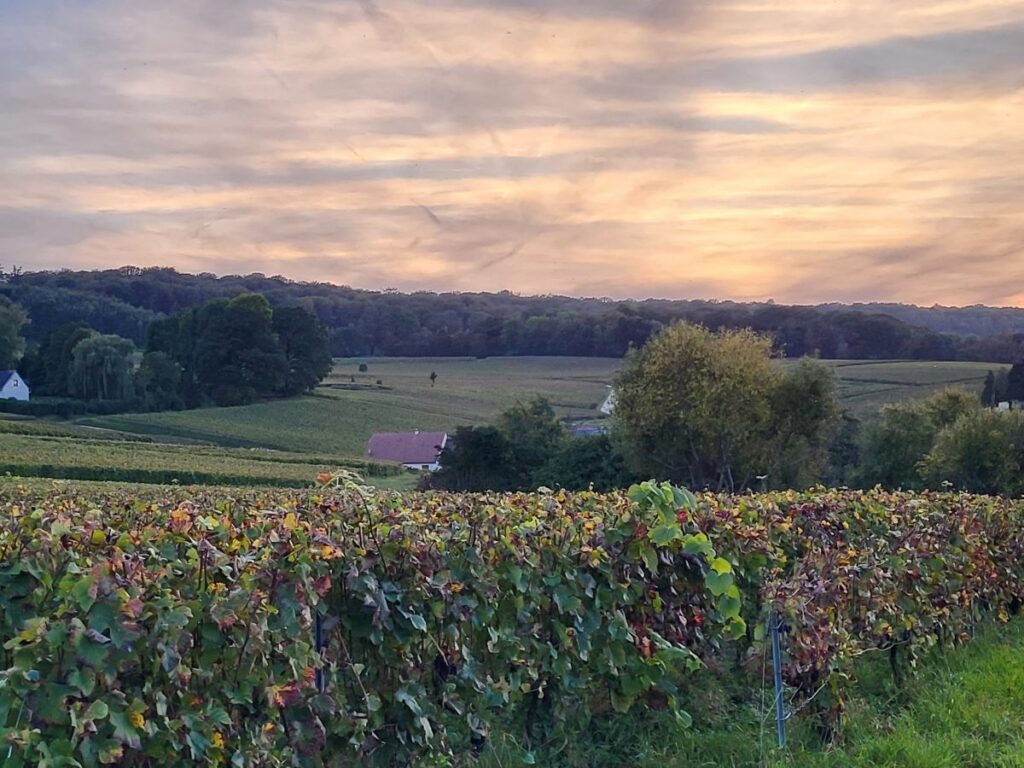
Both Champagne brands offer Blanc de Noirs champagnes which are high end champagnes as the grapes harvested must be undamaged and of highest quality. For Blanc de Noirs champagne the grape flesh of Pinot Noir and Pinot Meunier grapes is used. The grapes` skins are rapidly separated during the fermentation process to yield a white champagne.
Grapes used for Veuve Clicquot vs Moet Chandon
When it comes to the grape varieties used in Veuve Clicquot and Moet & Chandon, both prestigious champagne houses have their own unique blends that contribute to their distinct flavors. Both use three grapes in different percentages from cru and grand cru vinyards.
Veuve Clicquot is known for its bold and structured taste, achieved by a higher percentage of Pinot Noir in its blend. The Pinot Noir grape variety adds depth and richness to the blended champagne, giving it a complex and robust profile that stands out. A hint of Pinot Meunier is added to complete the blend.
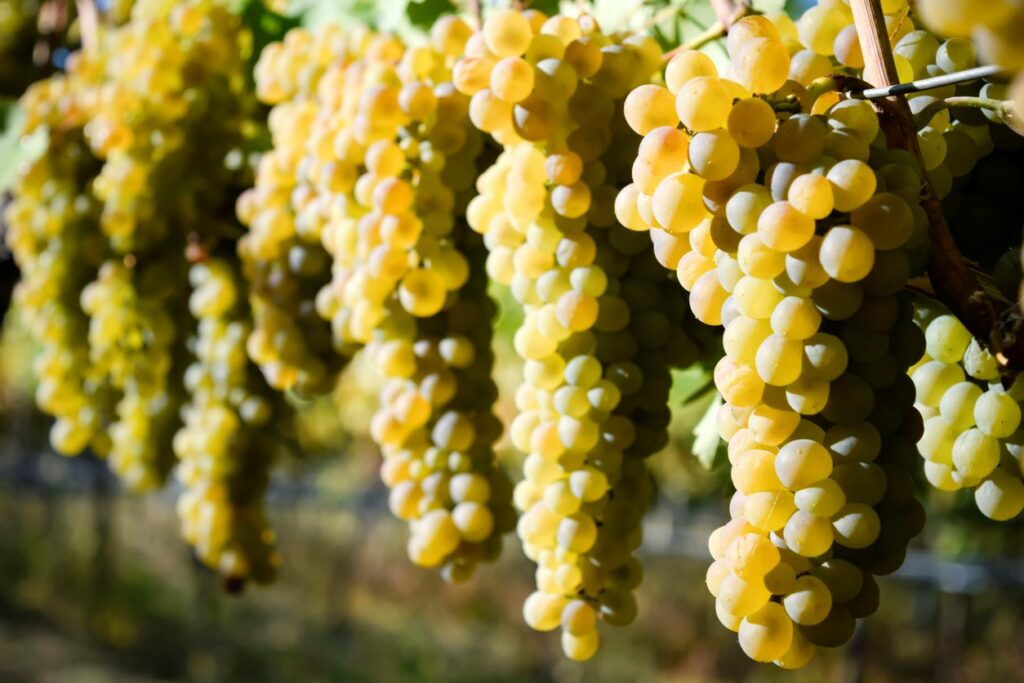
On the other hand, Moet Chandon has a more balanced approach with equal proportions of Pinot Noir, Pinot Meunier, and Chardonnay in its classic Brut Imperial blend. This carefully crafted combination results in a more refreshing and vibrant champagne with citrusy notes and a crisp finish. The inclusion of Chardonnay brings elegance and finesse to the overall flavor profile of Moet & Chandon’s champagne, making it an ideal choice for those who prefer a lighter style.
While both Veuve Clicquot and Moet & Chandon utilize premium grapes in their production process, their differing ratios and blending techniques ultimately lead to distinctive champagnes that cater to different preferences. Moet vs Veuve – Whether you enjoy the bold complexity of Veuve Clicquot or the balanced elegance of Moet & Chandon, there’s no denying that these renowned champagne houses excel in creating unforgettable tasting experiences through their expert use of Pinot Noir, Pinot Meunier, and Chardonnay grapes.
Production of Veuve Cliquot
The production of Veuve Clicquot is a meticulous process. It results in an exquisite range of wines, each unique in its own way. Contrary to popular belief, the famous Veuve Clicquot Champagne house does not produce just one sparkling wine, but a diverse collection that showcases different styles and flavors from non vintage to vintage champagne.
From their iconic Yellow Label Brut to their prestigious La Grande Dame, Veuve Clicquot offers a wide array of options for all palates. La Grande dame is a champagne blended from 8 different grand cru wines.
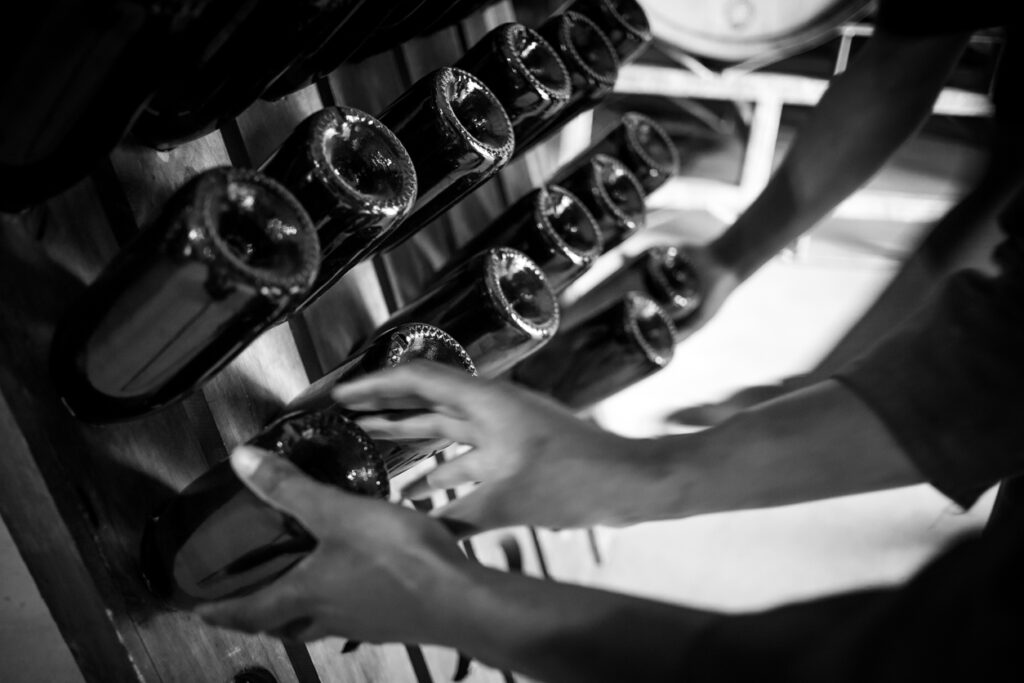
What sets Veuve Clicquot Yellow Label apart from other Champagne and high end sparkling wine producers is not only the number of wines they offer but also the consistency in quality across all their different labels too. Each wine undergoes strict selection criteria ensuring only the highest-grade grapes are used.
This attention to detail can be tasted in every sip. Whether you’re enjoying the Veuve Clicquot non-vintage offerings or exploring the complexity of their vintage and prestige cuvées.
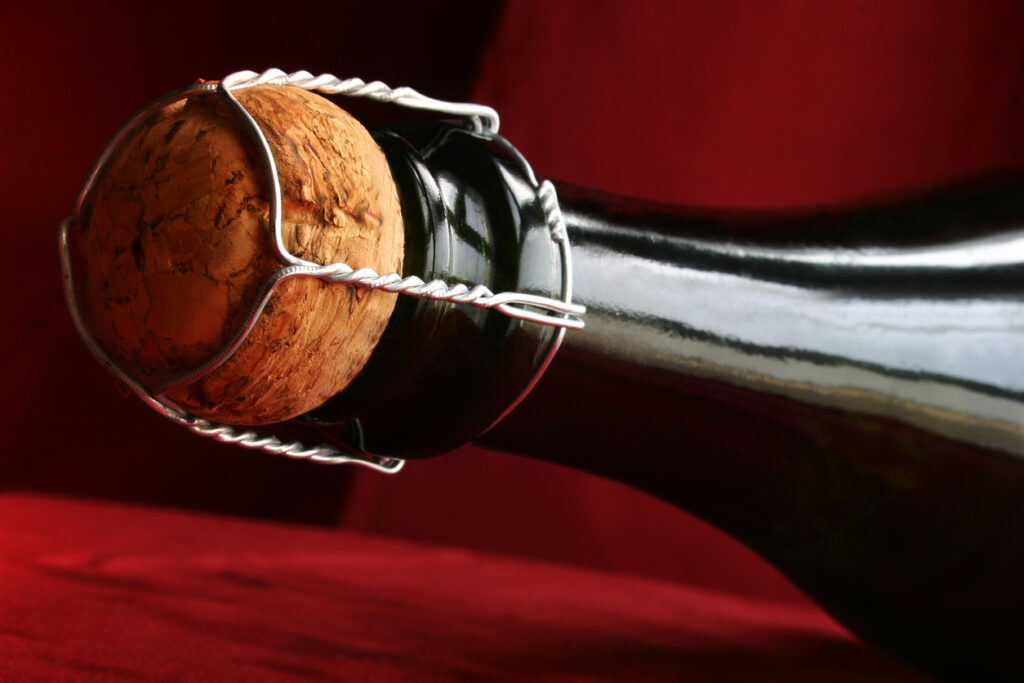
Whether you prefer the freshness and vibrancy of their Rosé or the finesse and elegance found in their Vintage Blanc de Blancs, Veuve Clicquot exemplifies excellence through diversity.
With such an extensive range sparkling wines available, there is always a bottle that will suit any occasion or your personal preference or taste.
Production of Moet Chandon
One of the most fascinating aspects of Moet Chandon Champagne production is the vast number of wines involved. To create their signature blend, Moet Chandon crafts its Champagne from grapes sourced over 200 different vineyards. Each contributes a unique character and flavor profile to the final product, Moet Chandon champagne.
By sourcing grapes from such a wide range of terroirs across the Champagne region, they are able to achieve complexity and depth in their wines that is unrivaled.
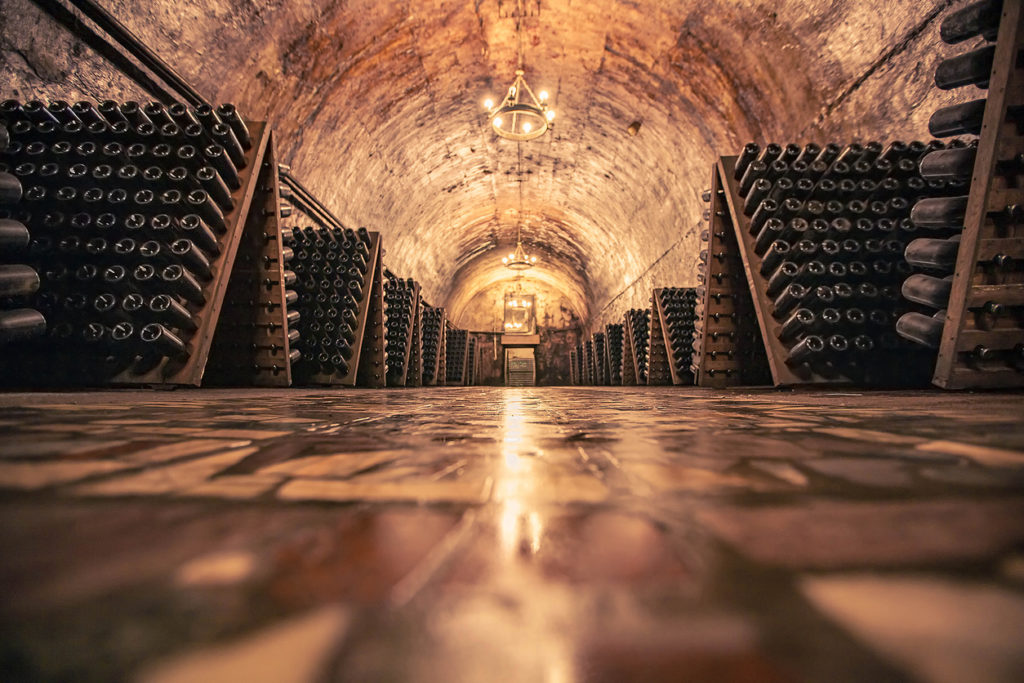
Additionally, Moet Chandon uses an extensive selection process. It ensures that only the highest quality grapes make it into their blends. They employ expert viticulturists who meticulously examine each vineyard parcel and hand-select only the best fruit for further processing. This attention to detail ensures that every bottle of Moet et Chandon Champagne meets their strict quality standards. It delivers a consistent experience for consumers worldwide.
Aroma of Veuve Cliquot and Moet et Chandon Champagne
The moment the effervescent golden bubbles of Veuve Cliquot’s Brut Yellow Label touch your lips, a symphony unfolds on your palate. Each sip releases a luxurious bouquet of floral notes mingling with hints of freshly baked pastries.
The distinct aroma is reminiscent of an elegant afternoon tea party in a French garden. The air is filled with the scent of blooming jasmine and delicate orange blossoms.
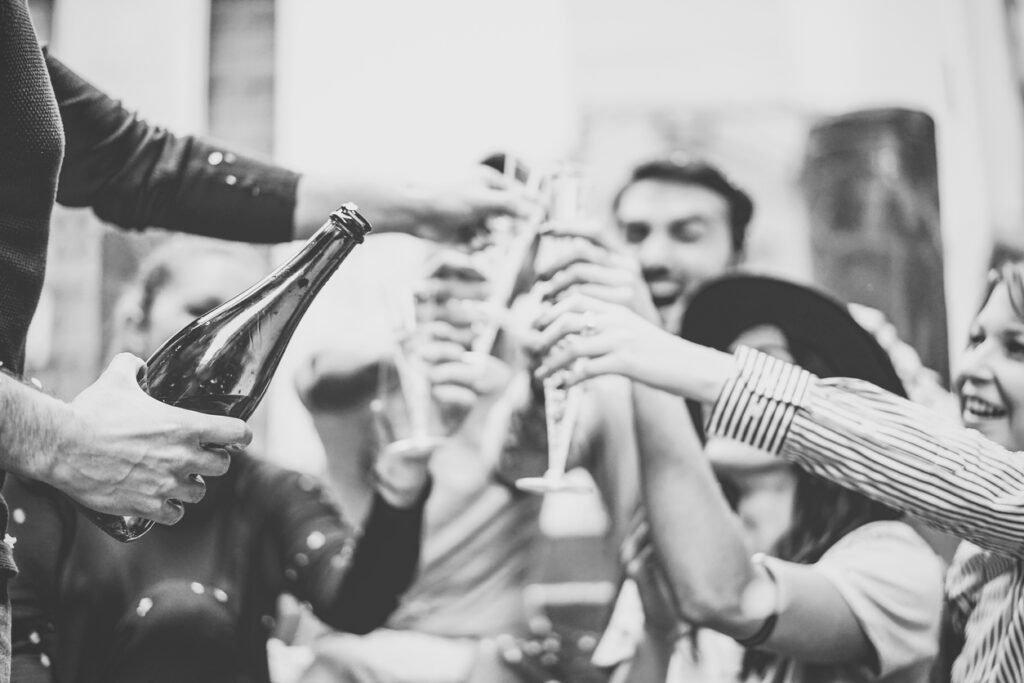
On the other hand, Moet et Chandon Brut Imperial seduces you with its enchanting aroma that transports you straight to the lavish vineyards of Champagne. As the cork is popped and you bring the glass to your nose, an ethereal blend of delicately nutty cereal notes, crisp green apples, juicy pears and stone fruits dances before you. It is accompanied by subtle whispers of citrus zest.
The fragrance possesses a unique ability to awaken memories of summer picnics on sun-drenched hillsides, as if capturing bottled sunshine itself.
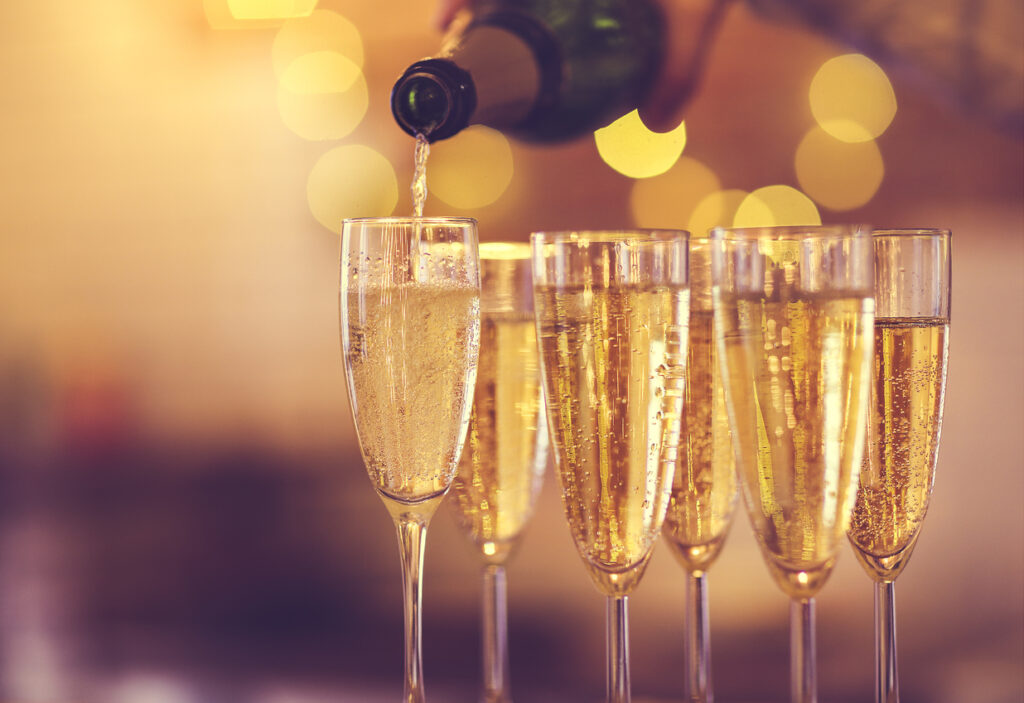
The magical aromas encapsulated within each sip of Veuve Cliquot and Moet et Chandon Brut Imperial from both champagne houses are much more than just pleasant scents. Moet vs Veuve – They transport us to remarkable places and create unforgettable moments for those fortunate enough to experience them.
Whether it be a romantic dinner for two or a grand celebration with friends, these exquisite champagnes hold the power to elevate any occasion into an extraordinary one. They leave our senses enchanted and our taste buds yearning for more.
There are key differences in the tasting notes of Veuve Clicquot champagne and Moet Chandon champagne. Veuve Clicquot has a fruity, apple like sour note, while Moet Chandon has a more pronounced brioche flavor with hints of stone fruits and an overall mellow profile.
How to serve Veuve Cliquot and Moet Champagne
When it comes to serving Veuve Cliquot champagne and Moet Chandon champagne, it’s all about creating an elegant and memorable experience by selecting a special sparkling wine. Start by chilling the bottles to the perfect temperature. While Champagne should be served quite cold, be mindful not to overchill it as this may mute its flavors. Aim for a temperature around 45-50 degrees Fahrenheit. It can typically be achieved by placing the bottles in the refrigerator for about two hours.
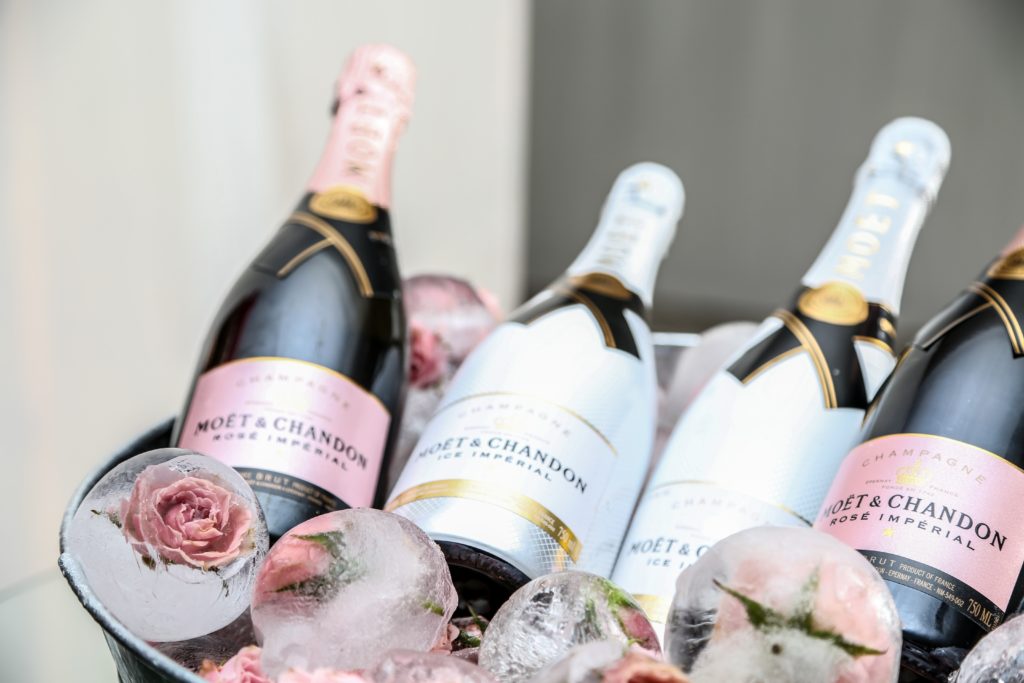
Next, prepare your Champagne glasses. Opt for tulip-shaped flutes or coupe glasses that allow for optimal aroma diffusion and showcase the bubbles of veuve clicquot and Moët Chandon beautifully . Before pouring, ensure your vintage champagne glasses are clean and free from any residue or detergent that could interfere with the taste of your precious bubbly.
When ready to serve, gently remove the foil from each bottle without disturbing its carbonation. Hold the base of each bottle firmly at a slight angle. Then slowly twist open the wire cage until it loosens completely.
Best food Pairings for Veuve Cliquot and Moet Champagne
When it comes to pairing Champagne with food, Veuve Cliquot and Moet et Chandon are two exceptional choices among the best champagne of brands. The delicate and refined flavors of these Champagnes make them versatile options for various food pairings for champagne drinkers for special occasions.
To complement taste the vibrant acidity and rich bubbles of Veuve Clicquot’s Yellow Label, try matching it with a plate of freshly shucked oysters or a creamy seafood risotto. The briny flavors in the oysters enhance the crispness of the Champagne. The richness of the risotto brings out its fruity undertones.

On the other hand, Moet et Chandon Brut Imperial is known for its elegant structure and notes of white fruits. For a delightful contrast, pair this Champagne with tangy goat cheese crostini or an assortment of sushi rolls. The creaminess of goat cheese balances perfectly with the lively fruitiness in each sip. This way creating a harmonious combination on your palate. Alternatively, sushi’s clean flavors and delicate textures accentuate the subtle nuances found in Moet et Chandon non vintage champagne.

Which Champagne is better Veuve Cliquot or Moet et Chandon?
Veuve Cliquot Yellow Label and Moet et Chandon Brut Imperial are two champagnes where you won`t see big price differences. The main difference between the two is the flavor.
Whereas Veuve Cliquot Yellow Label shows the fruit forward with floral notes with hints of freshly baked pastry Moet et Chandon Brut Imperial shows the fruit forward a blend of crisp green apples and juicy pears accompanied by subtle whispers of citrus zest.
In the end it`s up to you to decide if you prefer a champagne with floral and brioche tasting notes or with strong and crisp green notes!
Conclusion
In conclusion, while both Veuve Clicquot and Moet et Chandon are prestigious champagne brands, there are distinct differences that set them apart. Veuve Clicquot is known for its consistent quality and rich history, with a focus on traditional production methods. On the other hand, Moet et Chandon is recognized for its innovative approach to champagne-making.
They are constantly pushing boundaries and exploring new flavors. Both brands offer unique taste profiles and cater to different preferences. Whether you are seeking the classic elegance of Veuve Clicquot or the bold experimentation of Moet et Chandon, there is a champagne choice for every palate. So raise a glass and toast to the delightful diversity of these two world renowned champagnes!

